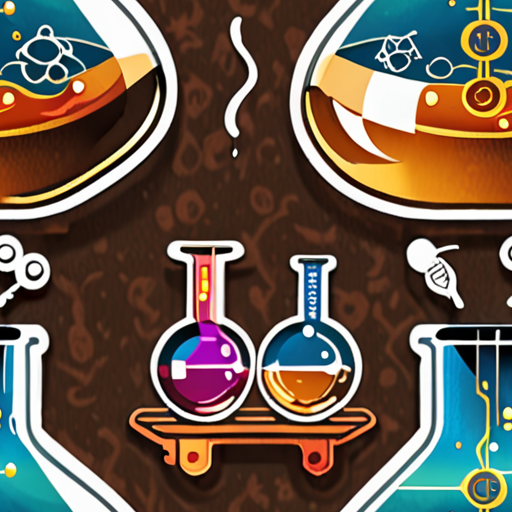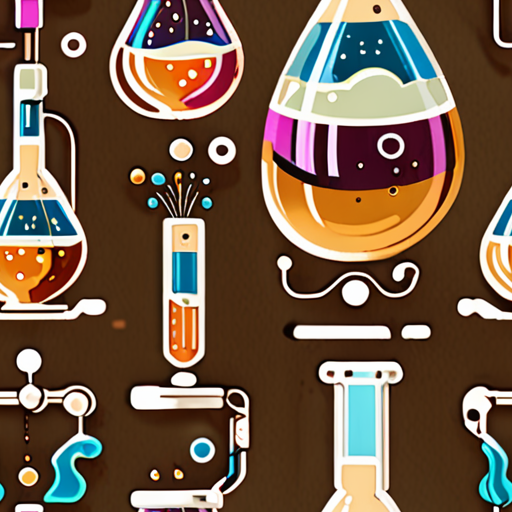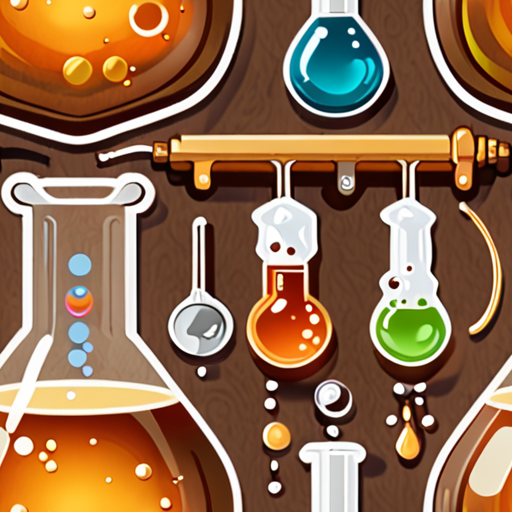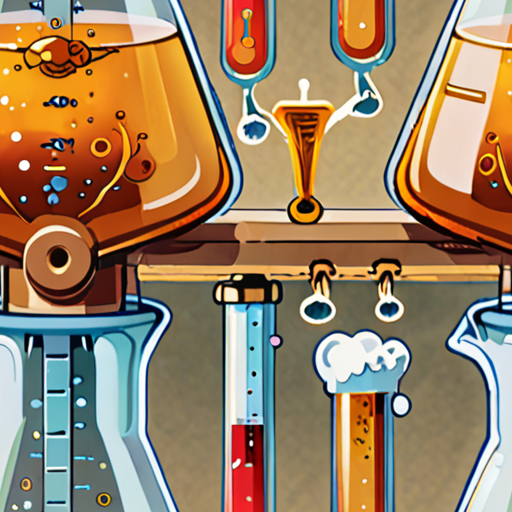When it comes to brewing the perfect pint, one of the biggest challenges many brewers face is identifying and correcting common beer off-flavors. These unwanted tastes and aromas can arise from a variety of factors, including yeast strains, fermentation techniques, and even equipment cleanliness. As a result, understanding the causes of beer off-flavors has become increasingly important for both professional breweries and homebrew enthusiasts alike.

Understanding Common Beer Offflavors
Brewers strive for perfection in every batch, but sometimes off-flavors can sneak in and ruin the taste experience.
- Causes of Common Beer Offflavors
- Contamination: Bacteria, wild yeast, or mold can infect the beer during fermentation or storage, causing off-flavors.
- Equipment Issues: Old or poorly maintained equipment can harbor bacteria or other microorganisms that contaminate the beer.
- Water Quality: Poor water quality can affect the flavor and aroma of the beer.
- Ingredient Quality: Low-quality ingredients, such as old hops or poor-quality grains, can impact the flavor and aroma of the beer.
- Temperature Control: Inconsistent temperature control during fermentation or storage can lead to off-flavors.
Identifying Common Beer Offflavors
Brewers need to be able to identify the source of the off-flavor to correct it.
- Sourness: A sour taste can indicate contamination or poor sanitation.
- Metallic Taste: A metallic taste can suggest equipment issues or poor water quality.
- Diacetyl: A buttery or butterscotch flavor can indicate yeast strain or fermentation issues.
- Acetaldehyde: A green apple or grassy flavor can suggest fermentation issues or poor yeast health.
Correcting Common Beer Offflavors
Once identified, brewers can take steps to correct the issue.
- Sanitize Equipment: Regular sanitization can prevent contamination and reduce the risk of off-flavors.
- Improve Water Quality: Using high-quality water or adjusting the brewing process can minimize the impact of poor water quality.
- Source High-Quality Ingredients: Using fresh, high-quality ingredients can improve the flavor and aroma of the beer.
- Monitor Temperature: Consistent temperature control during fermentation and storage can prevent off-flavors.
Expert Tips for Brewers
By understanding the causes of common beer off-flavors and taking steps to correct them, brewers can produce high-quality beers that delight their customers.
At The Goods On Tap , we’re passionate about helping brewers perfect their craft and create exceptional beers.
For more information on brewing techniques and industry trends, visit our website and explore our resources.
Troubleshooting and Eliminating Off-Flavors in Homebrewed Beer
To achieve the perfect brew, it’s essential to identify and eliminate off-flavors that can compromise the quality and taste of your homebrewed beer.
- Common Causes of Off-Flavors
- Bacterial contamination
- Oxidation
- Infected ingredients
- Inadequate sanitation
- Identifying Off-Flavors
- Pay attention to unusual aromas and tastes during fermentation and conditioning
- Monitor temperature, pH levels, and yeast health
- Regularly inspect equipment and storage containers for signs of contamination
- Strategies for Eliminating Off-Flavors
- Cleaning and Sanitizing Equipment
- Use a sanitizer specifically designed for brewing equipment
- Rinse thoroughly to prevent residue buildup
- Yeast Selection and Management
- Select a yeast strain suitable for your beer style
- Maintain optimal fermentation temperatures and conditions
- Ingredient Quality Control
- Sources high-quality ingredients from reputable suppliers
- Store ingredients properly to prevent spoilage
- Monitoring and Adjusting Brewing Parameters
- Regularly check pH levels, temperature, and oxygenation
- Adjust brewing parameters as needed to prevent off-flavor development
By implementing these strategies and staying vigilant, you can minimize the risk of off-flavors and produce high-quality homebrewed beer that rivals commercial offerings.
For more information on brewing techniques and best practices, visit our Brewing Guides section.
Additionally, consider consulting our Reviews section for recommendations on brewing equipment and supplies.
Remember to always follow proper sanitation procedures and maintain a clean environment to prevent bacterial contamination and oxidation.
Stay up-to-date with the latest brewing trends and techniques by visiting our News section.

Understanding the Underlying Causes of OffFlavors in Beer
As a craft beer enthusiast, there’s nothing quite like cracking open a perfectly brewed pint, savoring the complex flavors and aromas that have been carefully crafted by skilled brewers.
- However, off-flavors can quickly ruin the experience, leaving you wondering what went wrong and how to prevent it from happening again.
- In this article, we’ll delve into the common causes of off-flavors in beer and explore effective techniques for preventing them from occurring in the first place.
The Science Behind OffFlavors
Off-flavors in beer can arise from a variety of factors, including:
- Bacterial contamination: Bacteria like Brettanomyces, Lactobacillus, and Pediococcus can introduce unwanted flavors and aromas into your beer.
- Oxidation: Exposure to oxygen can cause beer to become stale and develop off-flavors.
- Contamination during fermentation: Wild yeast or bacteria can infect your fermenter, leading to off-flavors and aromas.
- Equipment cleanliness: Failing to properly clean and sanitize equipment can lead to bacterial contamination and off-flavors.
- Water quality: Using poor-quality water can result in off-flavors and affect the overall character of your beer.
Prevention Techniques
To minimize the risk of off-flavors in your beer, consider the following best practices:
- Maintain a clean and sanitized brewhouse: Regularly clean and sanitize all equipment to prevent bacterial contamination.
- Monitor temperature and pH levels: Ensure that your fermentation temperatures and pH levels are within optimal ranges to prevent wild yeast or bacteria from taking hold.
- Use high-quality ingredients: Source fresh, high-quality hops, grains, and yeast to minimize the risk of off-flavors.
- Implement proper packaging and storage procedures: Store beer in a cool, dark place and use proper packaging materials to prevent oxidation and contamination.
- Regularly test and analyze your beer: Use tools like spectrophotometers and chromatography machines to monitor your beer’s quality and detect potential issues early on.
Conclusion
By understanding the common causes of off-flavors in beer and implementing effective prevention techniques, you can minimize the risk of ruining a perfectly good batch and enjoy a consistently high-quality brew.

Diagnosing and Rectifying Common Beer Off-Flavors
Brewers strive for perfection in every batch, but off-flavors can creep in unexpectedly. A beer flavor profile chart is a powerful tool for identifying and fixing common issues.
-
Diacetyl: A Buttery Nightmare
Diacetyl is a naturally occurring compound that can give beer a buttery, butterscotch flavor. While small amounts may be acceptable, excessive levels can be overwhelming. To diagnose diacetyl, look for a sweet, creamy aroma and a smooth, velvety texture. Brewers can reduce diacetyl by increasing fermentation temperatures, using diacetyl-reducing yeast strains, or adding diacetyl-reducing agents during fermentation.
-
Oxidation: The Enemy of Freshness
Oxidation occurs when beer is exposed to oxygen, leading to stale flavors and aromas. Diagnose oxidation by looking for a flat, lifeless appearance and a stale, cardboard-like smell. To prevent oxidation, brewers can minimize headspace in kegs and bottles, use nitrogen or CO2 gas to displace oxygen, or add antioxidants like vitamin C or E.
-
Yeast-Derived Flaws: The Source of Many Problems
Yeast-derived flaws can arise from poor sanitation, inadequate temperature control, or over- or under-fermentation. Diagnose yeast-derived flaws by examining the beer’s color, clarity, and head retention. Brewers can mitigate yeast-derived flaws by ensuring proper sanitation, monitoring temperature and pH levels, and adjusting fermentation schedules as needed.
Using a Beer Flavor Profile Chart to Guide Your Way
A beer flavor profile chart is a visual representation of a beer’s characteristics, including its appearance, aroma, taste, mouthfeel, and finish. By tracking changes in these parameters over time, brewers can identify patterns and pinpoint potential issues. Regularly reviewing a beer flavor profile chart helps brewers stay on track, making adjustments as necessary to produce high-quality beer.
Best Practices for Maintaining Beer Quality
To ensure consistent quality, brewers should:
- Monitor temperature and pH levels closely
- Maintain proper sanitation and hygiene practices
- Adjust fermentation schedules as needed
- Minimize headspace in kegs and bottles
- Use nitrogen or CO2 gas to displace oxygen
- Add antioxidants like vitamin C or E
Conclusion
By understanding common beer off-flavors and utilizing a beer flavor profile chart, brewers can diagnose and rectify issues before they become major problems. With regular monitoring and adjustments, brewers can produce consistently high-quality beer that meets the expectations of even the most discerning palates.
Identifying Key Signs and Symptoms of Off-Flavors in Beer
Brewers often face challenges in detecting off-flavors in beer, which can significantly impact its taste and overall quality.
- Common Causes of Off-Flavors
- Contamination during fermentation or storage
- Inadequate sanitation procedures
- Poor ingredient quality
- Incorrect brewing techniques
Systematic Approach to Detecting Off-Flavors
- Conduct Regular Sensory Evaluations
- Train staff to recognize off-flavor profiles
- Use standardized tasting protocols
- Analyze feedback from customers and distributors
Key Signs and Symptoms of Off-Flavors
- Sourness
- Acidity levels exceeding acceptable limits
- Unpleasant aromas or flavors
- Discoloration or sedimentation
Addressing Off-Flavors Effectively
- Investigate Root Cause
- Review brewing processes and ingredients
- Consult with experts or conduct further testing
- Implement corrective actions to prevent recurrence
Best Practices for Preventing Off-Flavors
- Maintain Cleanliness and Sanitation
- Regularly clean and sanitize equipment
- Follow proper handling and storage procedures
- Monitor temperature and pH levels
Resources for Brewers
- Brewers Association
- American Homebrewers Association
- Beer Town

Identifying and Eliminating Unwanted Flavors in Craft Beer
We’ve all experienced it – taking a sip of what we thought was going to be a perfect pint, only to be met with an unpleasant off-flavor that ruins the whole experience.
- Sourness: Caused by wild yeast or bacteria, sour beers can be intentional, but often indicate contamination or poor sanitation.
- Bitterness: Excessive bitterness can result from over-extraction during brewing, old hops, or incorrect water chemistry.
- Astringency: Often caused by tannins, astringent beers can be due to under-modification, old grains, or excessive hopping.
- Diacetyl: A buttery or butterscotch flavor, diacetyl is usually a sign of yeast stress or fermentation issues.
- Acetaldehyde: A fruity or green apple flavor, acetaldehyde is typically a result of under-fermentation or yeast strain issues.
- Esters: Fruity or floral esters can be desirable in certain beer styles, but excessive levels may indicate yeast health problems.
- Phenolics: Medicinal or band-aid-like flavors, phenolics are often a sign of oxidation or poor storage conditions.
- Stale or cardboard flavors: Typically a result of oxidation, stale flavors can be caused by old ingredients, poor packaging, or inadequate storage.
Determining the Root Cause
To effectively eliminate unwanted flavors, brewers need to identify the underlying cause.
- Check your ingredients: Old or low-quality grains, hops, or yeast can contribute to off-flavors.
- Review your brewing process: Look for potential issues with temperature control, pH management, or sanitation.
- Analyze your fermentation: Monitor yeast health, fermentation temperatures, and oxygen levels to prevent off-flavor development.
- Inspect your equipment and storage: Ensure proper cleaning, sanitizing, and storage procedures are followed to prevent contamination and oxidation.
Corrective Actions
Once the root cause has been identified, take corrective actions to rectify the issue.
- Adjust your recipe: Modify ingredient ratios, hop varieties, or yeast strains to mitigate off-flavor production.
- Improve your brewing technique: Refine temperature control, pH management, or sanitation protocols to prevent off-flavor development.
- Optimize fermentation: Adjust yeast health, fermentation temperatures, or oxygen levels to promote healthy fermentation and minimize off-flavor formation.
- Maintain clean and sanitized equipment: Regularly inspect and clean equipment to prevent contamination and oxidation.
Conclusion
By understanding the common indicators of off-flavors and employing a diagnostic approach, brewers can pinpoint the root cause and take corrective actions to eliminate unwanted flavors and produce high-quality craft beer.

0 Comments